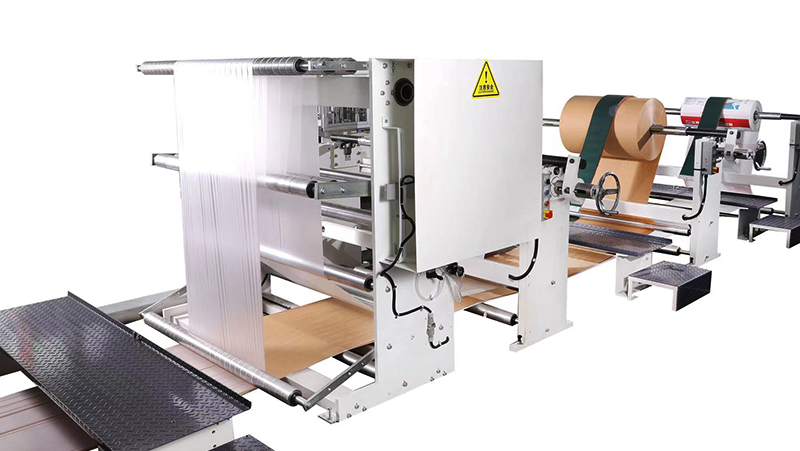Advancements in Remote Monitoring Systems for Sustainable Paper Bag Production and Quality Assurance
Release time:2025-05-14 Classification:Knowledge
The integration of remote monitoring technologies into industrial processes has revolutionized manufacturing efficiency, particularly in sectors prioritizing sustainability. Among these innovations, the Remote Monitoring Paper Bag System stands out as a transformative solution for optimizing paper bag production, ensuring quality control, and minimizing environmental impact. This article explores the technical framework, operational benefits, and industry applications of this cutting-edge system.

1. Technical Architecture of Remote Monitoring Paper Bag Systems
A Remote Monitoring Paper Bag System combines IoT-enabled sensors, cloud-based analytics, and real-time data transmission to oversee every stage of paper bag manufacturing. Key components include:
- Embedded Sensors: Strategically placed within production machinery to track parameters such as tensile strength, moisture levels, glue application consistency, and print alignment.
- Centralized Data Hub: Aggregates sensor data for processing, enabling predictive maintenance alerts and anomaly detection.
- User Interface (UI) Dashboard: Provides operators with visual metrics, trend analyses, and remote control capabilities via web or mobile platforms.
- Automated Reporting Tools: Generate compliance documentation for quality standards and sustainability certifications.
By leveraging machine learning algorithms, the system adapts to production patterns, identifying inefficiencies such as material waste or energy overconsumption.
2. Operational Advantages in Paper Bag Manufacturing
The adoption of remote monitoring systems delivers measurable improvements across three critical areas:
A. Enhanced Production Efficiency
Real-time oversight reduces downtime by flagging equipment malfunctions before failures occur. For instance, vibration sensors detect irregularities in cutting blades, prompting preemptive replacements. This proactive approach minimizes disruptions in high-volume production cycles.
B. Quality Assurance and Consistency
Optical sensors validate print clarity and dimensional accuracy, ensuring every batch meets predefined specifications. Statistical process control (SPC) tools analyze historical data to refine tolerances, reducing defect rates by up to 30% in pilot implementations.
C. Sustainability Optimization
By monitoring raw material usage and energy consumption, manufacturers achieve precise resource allocation. One case study revealed a 22% reduction in paper waste after implementing sensor-guided cutting systems. Additionally, carbon footprint tracking aligns with global ESG (Environmental, Social, Governance) benchmarks.
3. Applications Across the Paper Packaging Lifecycle
Remote monitoring extends beyond factory floors, offering end-to-end visibility:
- Inventory Management: RFID tags on paper rolls enable automated stock replenishment, preventing production delays.
- Logistics Tracking: GPS-enabled sensors monitor storage conditions (e.g., humidity, temperature) during transportation, preserving bag integrity.
- Post-Consumer Feedback: QR codes on finished bags allow customers to report defects, feeding data back into quality improvement loops.
4. Overcoming Implementation Challenges
While remote systems offer transformative potential, successful deployment requires addressing:
- Cybersecurity: Encrypted data protocols and multi-factor authentication safeguard against unauthorized access.
- Interoperability: Compatibility with legacy machinery often necessitates modular hardware upgrades.
- Workforce Training: Interactive UI designs and simulation-based tutorials ease the transition for operators.
5. Future Trends and Industry Outlook
Emerging technologies like 5G connectivity and edge computing will further enhance real-time decision-making. For example, AI-driven defect classification could automate rejection mechanisms with 99.5% accuracy. Additionally, blockchain integration may soon enable transparent supply chain auditing, reinforcing consumer trust in eco-friendly claims.
As demand for sustainable packaging grows—projected to exceed $450 billion globally by 2027—the Remote Monitoring Paper Bag System positions manufacturers to lead in both operational excellence and environmental stewardship. By marrying precision engineering with ecological responsibility, this technology redefines modern paper bag production as a benchmark for smart, sustainable industry practices.






